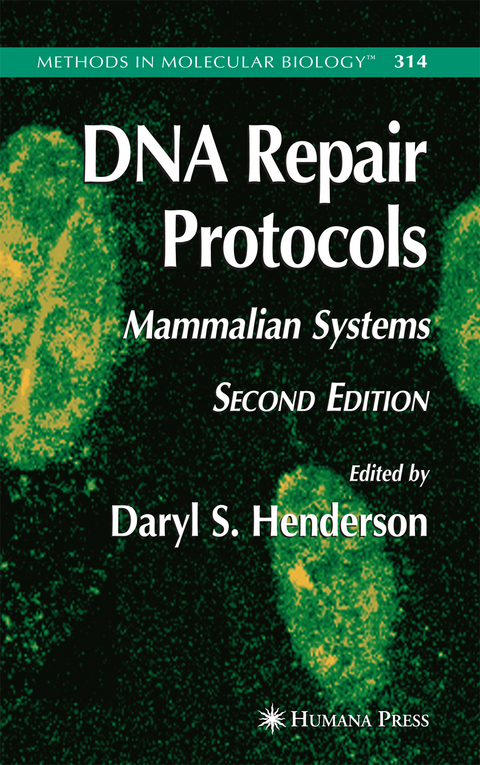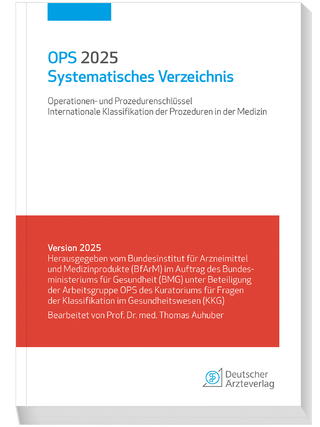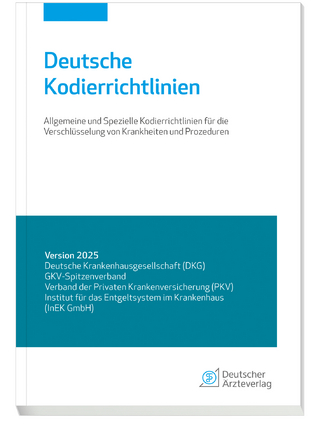
DNA Repair Protocols
Humana Press Inc. (Verlag)
978-1-58829-513-2 (ISBN)
Isolation of Mutagen-Sensitive Chinese Hamster Cell Lines by Replica Plating.- Complementation Assays Adapted for DNA Repair-Deficient Keratinocytes.- Cytogenetic Challenge Assays for Assessment of DNA Repair Capacities.- Evaluating the Delayed Effects of Cellular Exposure to Ionizing Radiation.- Inhibition of DNA Synthesis by Ionizing Radiation.- Analysis of Inhibition of DNA Replication in Irradiated Cells Using the SV40-Based In Vitro Assay of DNA Replication.- Cytometric Assessment of Histone H2AX Phosphorylation.- Detection of DNA Strand Breaks by Flow and Laser Scanning Cytometry in Studies of Apoptosis and Cell Proliferation (DNA Replication).- In Vitro Rejoining of Double-Strand Breaks in Genomic DNA.- Detection of DNA Double-Strand Breaks and Chromosome Translocations Using Ligation-Mediated PCR and Inverse PCR.- Plasmid-Based Assays for DNA End-Joining In Vitro.- Use of Gene Targeting to Study Recombination in Mammalian Cell DNA Repair Mutants.- Gene-Specific and Mitochondrial Repair of Oxidative DNA Damage.- Quantitative PCR-Based Measurement of Nuclear and Mitochondrial DNA Damage and Repair in Mammalian Cells.- Measuring the Formation and Repair of DNA Damage by Ligation-Mediated PCR.- Immunochemical Detection of UV-Induced DNA Damage and Repair.- A Dot-Blot Immunoassay for Measuring Repair of Ultraviolet Photoproducts.- Quantification of Photoproducts in Mammalian Cell DNA Using Radioimmunoassay.- DNA Damage Quantitation by Alkaline Gel Electrophoresis.- The Comet Assay.- Fast Micromethod DNA Single-Strand-Break Assay.- 32P-Postlabeling DNA Damage Assays.- Electrophoretic Mobility Shift Assays to Study Protein Binding to Damaged DNA.- Construction of MMR Plasmid Substrates and Analysis of MMR Error Correction and Excision.- Characterization of Enzymes ThatInitiate Base Excision Repair at Abasic Sites.- Base Excision Repair in Mammalian Cells.- In Vitro Base Excision Repair Assay Using Mammalian Cell Extracts.- Biochemical Assays for the Characterization of DNA Helicases.- Repair Synthesis Assay for Nucleotide Excision Repair Activity Using Fractionated Cell Extracts and UV-Damaged Plasmid DNA.- Assaying for the Dual Incisions of Nucleotide Excision Repair Using DNA with a Lesion at a Specific Site.- Analysis of Proliferating Cell Nuclear Antigen (PCNA) Associated With DNA Excision Repair Sites in Mammalian Cells.- Analysis of DNA Repair and Chromatin Assembly In Vitro Using Immobilized Damaged DNA Substrates.
| Erscheint lt. Verlag | 1.10.2005 |
|---|---|
| Reihe/Serie | Methods in Molecular Biology ; 314 |
| Zusatzinfo | XVIII, 498 p. |
| Verlagsort | Totowa, NJ |
| Sprache | englisch |
| Maße | 155 x 235 mm |
| Themenwelt | Informatik ► Weitere Themen ► Bioinformatik |
| Naturwissenschaften ► Biologie ► Biochemie | |
| Naturwissenschaften ► Biologie ► Genetik / Molekularbiologie | |
| Naturwissenschaften ► Biologie ► Mikrobiologie / Immunologie | |
| Naturwissenschaften ► Biologie ► Zellbiologie | |
| ISBN-10 | 1-58829-513-3 / 1588295133 |
| ISBN-13 | 978-1-58829-513-2 / 9781588295132 |
| Zustand | Neuware |
| Informationen gemäß Produktsicherheitsverordnung (GPSR) | |
| Haben Sie eine Frage zum Produkt? |
aus dem Bereich


